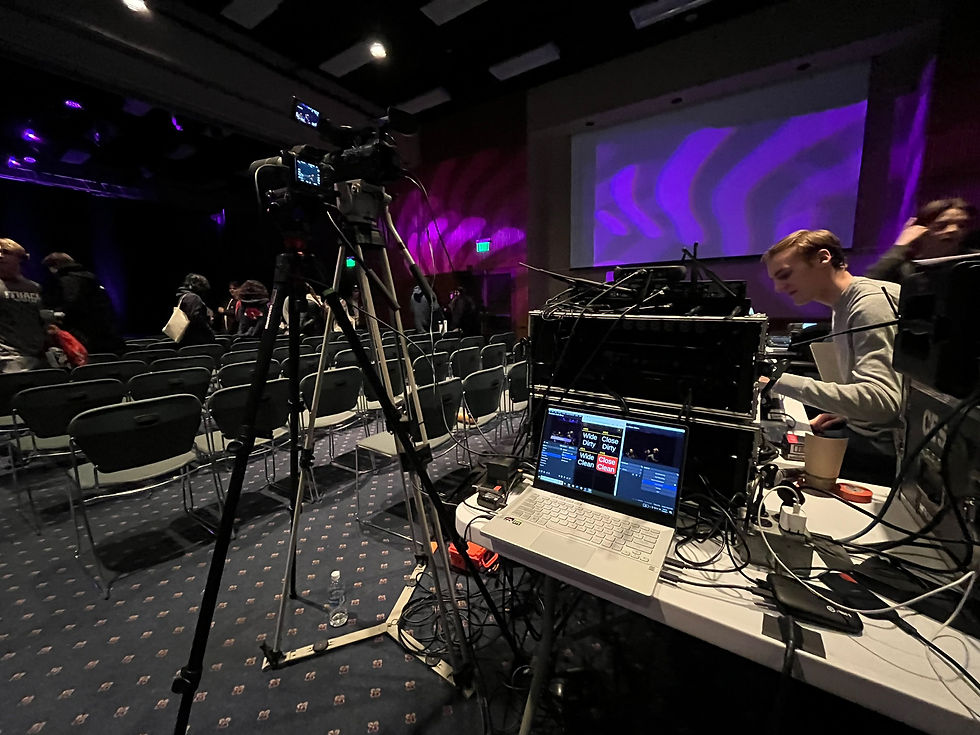Implementing SRT for Reliable Remote Video Transmission
- Jack DeNick
- Mar 3
- 2 min read
Updated: 21 hours ago
My goal was to transmit a video signal from a remote site back to our control room without any signal loss and little delay.
My Initial Research
My initial testing with Cameron Strong included utilizing NDI Bridge or NDI Remote. Utilizing NDI Bridge we were able to broadcast and receive a signal but with more testing of different video sources the video signal would loose a few frames or audio would drop. As NDI requires high bandwidth this was not going to work as we are sending our signal over the internet. Another solution was necessary.
My Implementation
I began researching other protocols including SRT (Secure Reliable Transition). SRT seemed to offer quality, reliability, and low-latency. This seemed like the best option to move forward with at the time.
To make the connection secure and on the same network, I configured a peer-to-peer VPN between my primary laptop and remote device.
I began configuring OBS stream settings. I enabled the WebSocket server and configured the port I would like to use for connection. I then had to make an exception in my Windows firewall for incoming UDP port I configured. In my streaming settings I selected a custom service and configured the server as srt://DEVICE_IP_ADRESS:PORT?mode=listener. The device IP address needs to be the IP address when connected to the VPN. Sometimes it would allow me to connect using the PC name instead of the IP address and other times it would fail to connect if configured that way. Setting the mode to listener permits the stream to only broadcast once there is a connection made.
On the control room end in OBS with the same VPN connected, I added a VLC source of the remote device with srt://DEVICE_IP_ADRESS:PORT. I then configured a full screen projection and audio to the input going to our switcher.
How It Was Utilized
On February 23, 2025 ICTV News had Special Coverage of Indivisible Tompkins' Launch Event. We utilized the green screen studio in the Roy H. Park School of Communications for a pre and post show with a three camera setup and had a remote crew in Downtown Ithaca with a three camera setup. The remote feed was sub-switched with a Blackmagic ATEM Extreme with the output being sent to Park with about a two second delay. In Park with utilized a TriCaster Mini with a custom made chroma key set by Ted Dougherty. We were live for about two and half hours covering the event and providing analysis.
Check out the broadcast here: https://youtube.com/live/xMtRgdvP7qQ
Areas To Still Improve
Setup a central server for the SRT to stream directly to instead of connecting directly to the remote stream
Setup a router with the VPN configured so all connected devices are automatically on the VPN
Add SRT stream directly in TriCaster without secondary device
Improve audio quality, though this might have just been the capture of the ATEM















